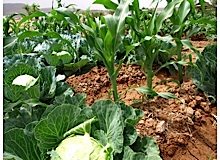 FAC recently published an in depth evaluation of the 2006-07 fertilizer subsidy programme. The evaluation, by Andrew Dorward (FAC and University of London) and Ephraim Chirwa (FAC and University of Malawi), assesses the impact and implementation of the Malawi Government Agricultural Input Subsidy Programme (AISP) in order to provide lessons for future interventions in growth and social protection. This follows on from a similar study covering 2005-06 by Blessings Chinsinga (University of Malawi).
FAC recently published an in depth evaluation of the 2006-07 fertilizer subsidy programme. The evaluation, by Andrew Dorward (FAC and University of London) and Ephraim Chirwa (FAC and University of Malawi), assesses the impact and implementation of the Malawi Government Agricultural Input Subsidy Programme (AISP) in order to provide lessons for future interventions in growth and social protection. This follows on from a similar study covering 2005-06 by Blessings Chinsinga (University of Malawi).
There has been a great deal of interest in this subsidy programme by a range of stakeholders and recently The Economist wrote an article about it referring to the FAC evaluation. Although the article does admit that “the subsidies have been a massive improvement on the panicky food buying of 2002 and 2005”, unsurprisingly it is critical of subsidies and state intervention, claiming that the programme was damaging for the private sector and encouraged corruption. The article also gives Kenya as an example of where subsidies were stopped, markets liberalised and yet farmers have been able to afford fertilisers.
The authors of the evaluation have since written to The Economist, arguing that there are such big differences between Kenya and Malawi that it is not possible to draw too many parallels and that there are conditions in Malawi that warrant state intervention and subsidies.
In addition Jonathan Kydd, a Professor at the University of London, has also written a useful comment about the article, again pointing out the differences between Kenya and Malawi – see below:
- Your analysis misses a crucial systemic issue which, if appreciated, would portray the Malawi’s fertiliser subsidy more favourably. The majority of rural Malawians do not have sufficient cash at planting time to purchase fertiliser at unsubsidised prices in quantities able make a meaningful impact on their harvests. The rural poor tend to be in a “maize trap”: the least risky route to assuring a food supply to grow maize but the small farm size, exhausted soils and uncertain rainfall make it unlikely that they will have a surplus to sell, so, for the majority of the rural poor, maize production is not “self-financing”.
- There are, of course, opportunities for income through labour for richer farmers, cash crops on their own land and micro-businesses, but most of these activities are very low return, just about covering immediate subsistence needs and not allowing for accumulation of a lump-sum to pay for useful quantities of fertiliser. In more normal circumstances, financial markets, including micro-finance, would provide solutions, but busines models have not been devised which can finance the maize production of the majority of poor Malawians on a sustainable basis.
- Therefore the fertiliser subsidy is a second-best policy in the face of a very specific instance of financial market failure. Although echoes of this Malawian problem can be found in Kenya, there rural people are relatively less poor, benefit from a more diversified economy better connected to world markets, so a higher proportion of small farmers can borrow for or self-finance fertiliser
